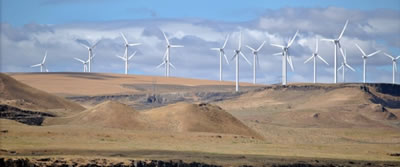Wind Energy Now Directly Competing With Coal On Cost
 Gregory Brew for OilPrice.com: Last week, Xcel Energy announced a multi-state wind capacity project, anticipated to be the largest in the United States. Spanning seven states, the project covers eleven new wind farms and would generate 3280 MWs at a cost of $3.5-4.4 billion. In its announcement, Xcel emphasized the cost-savings attached to wind power, arguing that it would save Xcel customers in the Midwest $7.9 billion over thirty years. This, rather than the environmental benefits of renewable energy, drove the company’s mission statement: wind was cheap, not just clean.
Gregory Brew for OilPrice.com: Last week, Xcel Energy announced a multi-state wind capacity project, anticipated to be the largest in the United States. Spanning seven states, the project covers eleven new wind farms and would generate 3280 MWs at a cost of $3.5-4.4 billion. In its announcement, Xcel emphasized the cost-savings attached to wind power, arguing that it would save Xcel customers in the Midwest $7.9 billion over thirty years. This, rather than the environmental benefits of renewable energy, drove the company’s mission statement: wind was cheap, not just clean.
Increasingly, this is a line of argument companies involved in renewable energy are deploying, finding that it gets better traction from skeptical consumers and fidgety investors. Existing tax credits, most notably the production tax credit (PTC) that keeps costs low, as well as a tax rebate per kilowatt hour. These help wind compete with natural gas as a cheap source of electricity and has driven the surge of utility interest in harnessing wind power, despite the much-touted promises of President Donald Trump to bring back American coal.
Moody’s Investor Services now estimates that the falling costs of wind power directly threatens 56 GW of coal power, out of 87 GW surveyed. Moody’s report estimates the MW-hour cost of wind in the Great Plains region at around $20, while coal comes in at $30. Full Article:
Comments (0)
This post does not have any comments. Be the first to leave a comment below.
Featured Product

